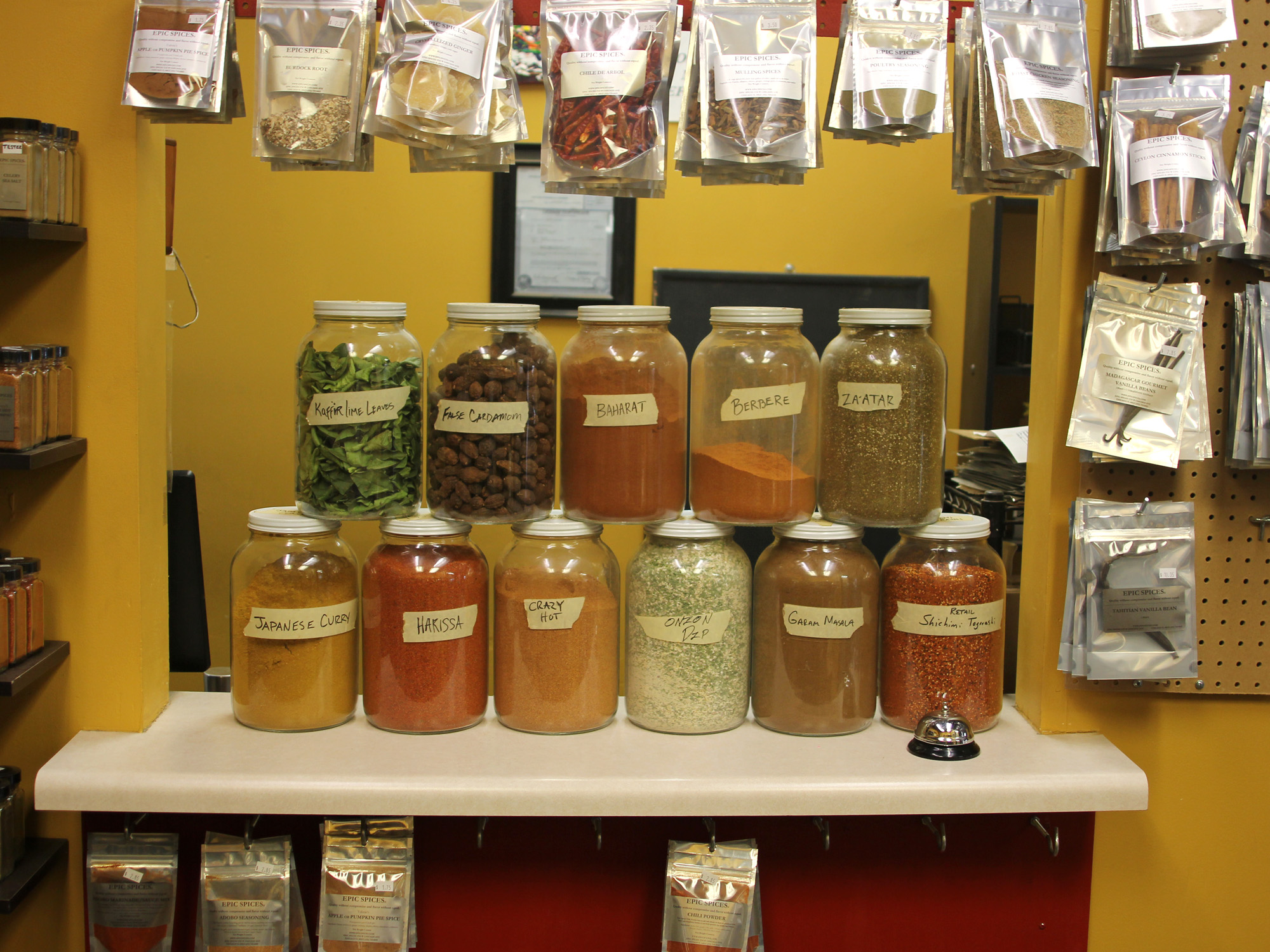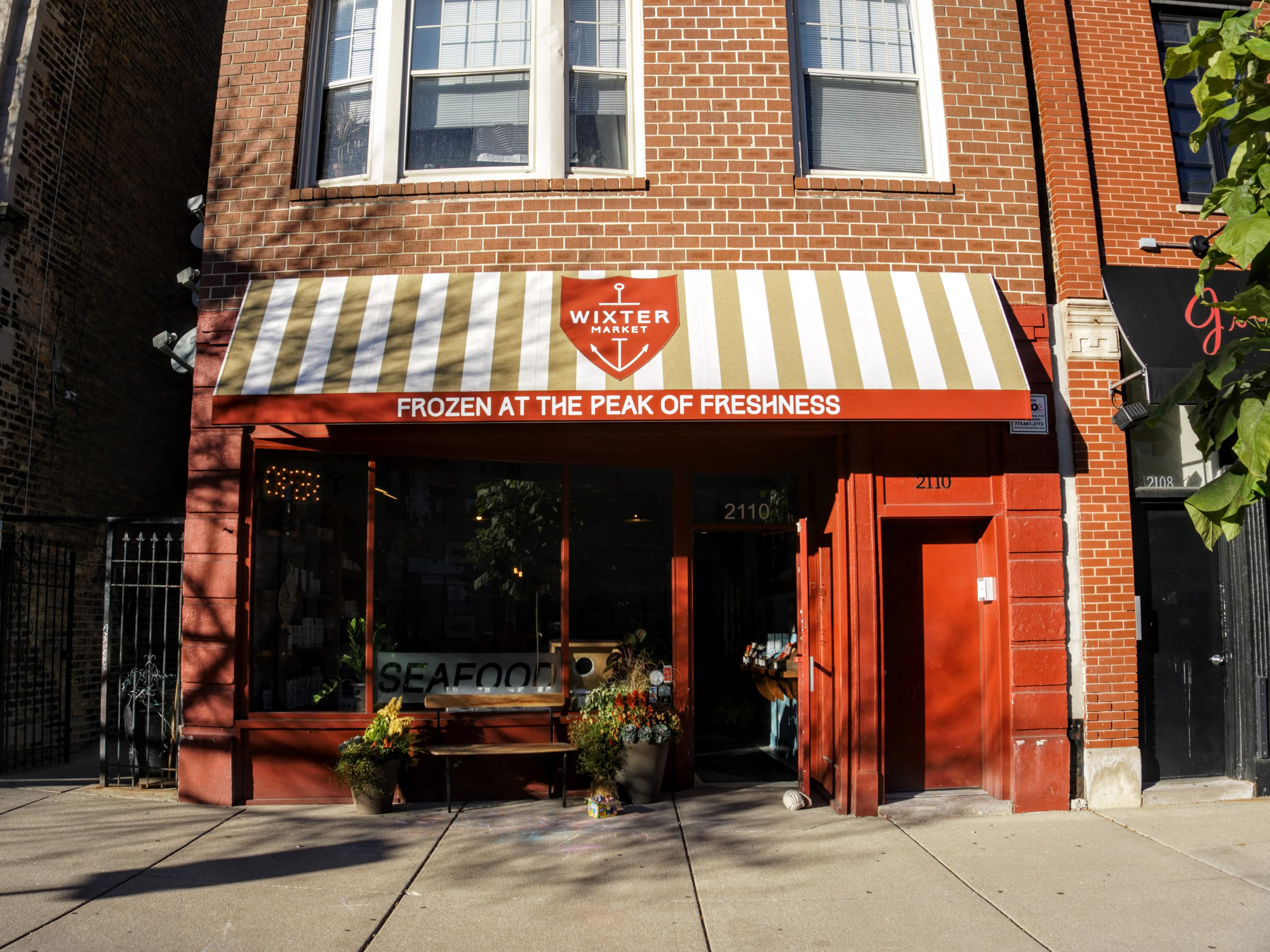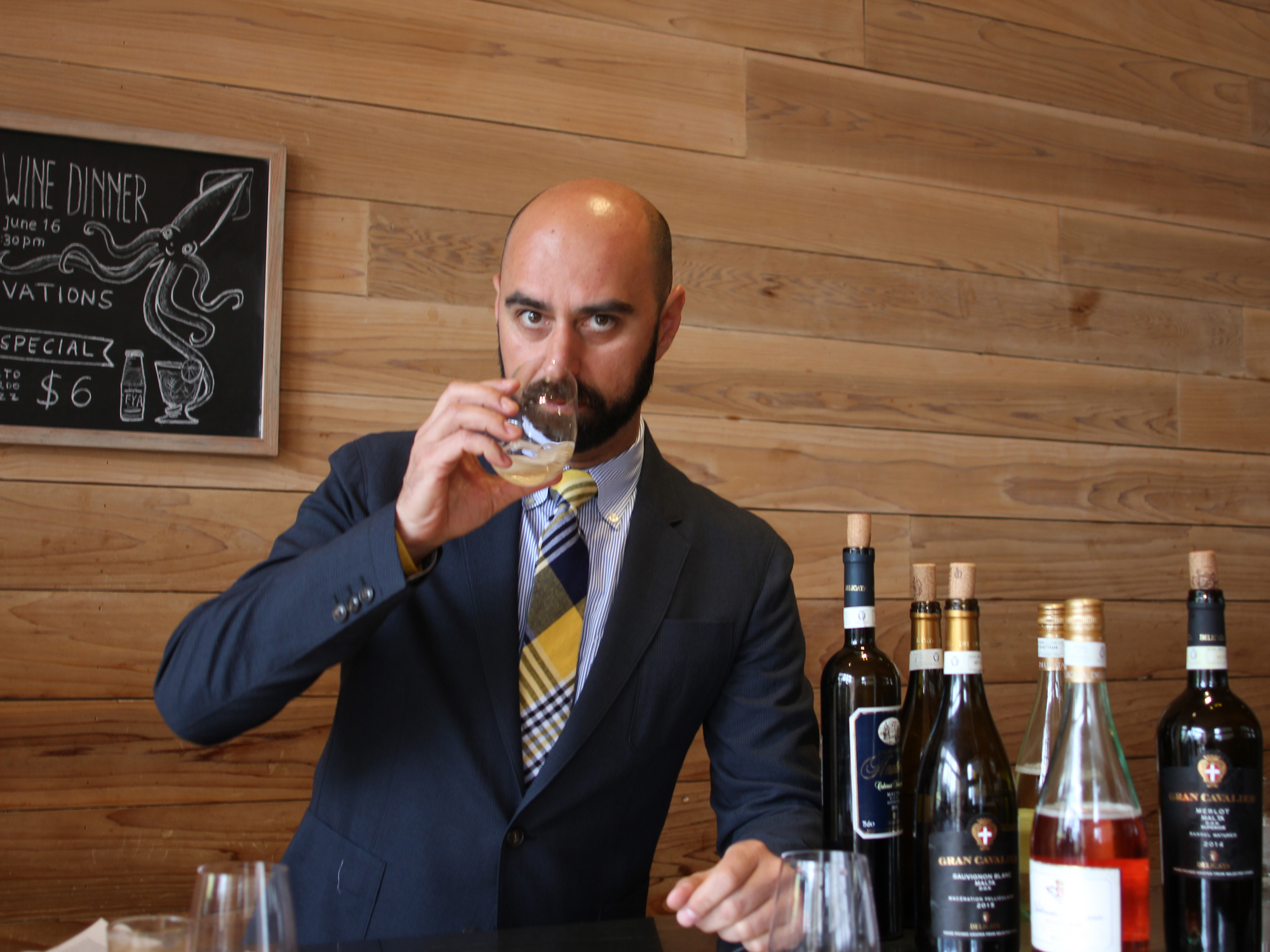MICHAEL MCAVENA NEVER INTENDED TO BECOME the face of beer in Chicago—which he was as the beer director of The Publican when it opened in 2008. He’s always loved wine and cocktails too, although that fell to the wayside when he became one of the first certified cicerones in the country and joined Paul Kahan’s modern version of a European beer hall. A litany of awards and recognition soon followed: StarChefs.com Chicago Rising Star Beer Sommelier in 2010, Eater Young Gun Finalist in 2012, Zagat 30 Under 30 in 2013.
“At the time, beer was simply easiest to dive into,” McAvena says. “The timing was right with Beer Advocate, an engaged community, cost and good venues. All the press I received [at The Publican] was in regards to beer.”
In 2013 he left The Publican and stepped away from beer, selling cider with Virtue Cider. At the end of 2014, Heisler Hospitality courted McAvena to oversee the beer program at Pub Royale. This year, with Heisler’s new project, Bad Hunter, McAvena was given a chance to put together a real wine list for the first time.
The list fluctuates between 70 and 80 bottles, highlighting categories like pétillant-naturel and orange wines. A $150 bottle of grower’s champagne is the most expensive wine on the affordable, approachable list, followed by a $120 bottle of estate grown pinot noir.
I recently sat down with McAvena for a chat about natural wine over several bottles of gamay.
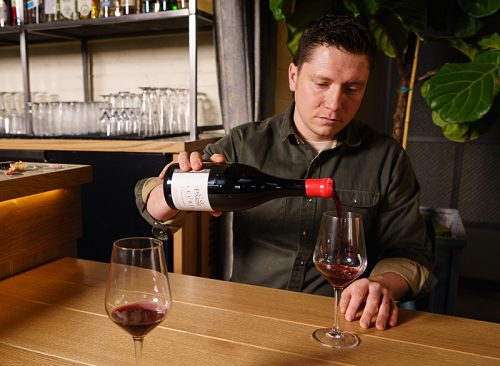
This is like Beaujolais Nouveau but really sour. I always thought of this as a sweeter wine.
Have you heard of When Wine before? It’s this biodynamic app – When Wine Tastes Best. Today everything is tasting really acidic. Tomorrow we’re in a fruit day.
Don’t you think that sounds kind of like astrology?
That’s what biodynamic is – it’s moon cycles. Whether you believe in astrology or not, the moon waxes and wanes and that affects what’s growing. It’s the truth. I don’t know that I believe every single thing that’s written about it, but so far all the scientific empirical data, it makes total sense. You’re not the same every day. Your mouth and hair is different. There’s a reason for that. These wines taste different day to day.
So when did you first try a natural or biodynamic wine?
I was talking to Jeremy Quinn at Webster’s Wine Bar two years into The Publican, whenever that was. I didn’t go to beer bars after I opened Publican. I wanted to get away. So going to Webster’s, seeing a movie next door, smoking some weed—that was the best thing ever. It was the same exploratory feeling as when I first got into beer. I thought some of the wines were pretty nuts but I really enjoyed them. I think back then, people thought you were in one of two camps. Either you were into geeky weird shit that was flawed or you liked normal wine. I just thought, “Wow, this tastes like lambic” and I found a lot of exciting things about it. But I didn’t understand it as much as I do now.
Was it hard to transition from beer to putting together your first 70-bottle wine list at Bad Hunter?
With beer and cider I learned about he chemical makeup of fermentation pretty deeply and I understood the vocabulary of acids, sugars, bacteria, yeasts, and looking at what happens with grapes. I still have a lot to learn about wine but it’s exciting to delve into this world. Nobody knows everything about wine and you don’t have to. [At Bad Hunter] we can talk about these specific wines and the ethos behind what we’re doing. I love drinking a beverage that’s so tied to land and terroir. You’re really getting to taste something special.
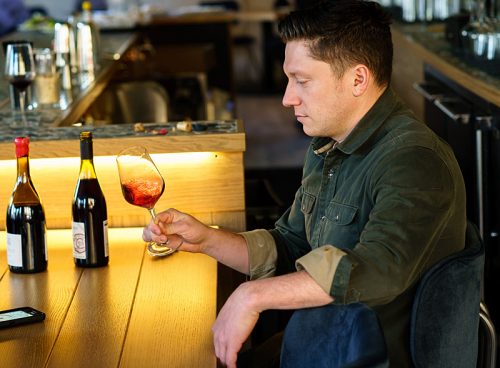
Do you have any mentors who have influenced your wine education?
I would say Jeremy Quinn at Webster’s. He probably didn’t even realize it, but my learning there was really important to me. Josh Perlman and I kind of came up at the same time but he’s always been more wine-focused. So we talk all the time. And hanging out with Craig Perman, the guys at Maverick and Jamie McLennan at Rootstock. Coming from beer and needing to find a group of people to learn from and drink with, I found that it’s the most open community. They don’t participate in the stuffy, sommi-ness. That’s been the greatest thing.
So what is the difference between biodynamic, natural and sustainable wines? Give us the CliffNotes version.
I like to say ambiguously that we like to serve responsible wine and not have to talk about it. Organic is clear. We understand what that is. The product you’re growing is organic and the vinification is organic. Biodynamic is the same thing. It’s above organic. Even in organic you can use pesticides. They don’t use any of that.
Some people are just making the same flavors and not interested in tasting the uniqueness of each site. To me, it’s like the McDonald’s-ification of wine.
Natural is ambiguous. There’s not certification for it. It’s like, we don’t use sulphur and we only use native yeasts. No genetically modified stuff. Organic and Biodynamic have parameters and bodies that qualify them. Natural is a style, a mantra and an ethos. It eschews the commercial wine world. I don’t want it to be about the classics. I don’t think people need to know about the classics to enjoy wine.
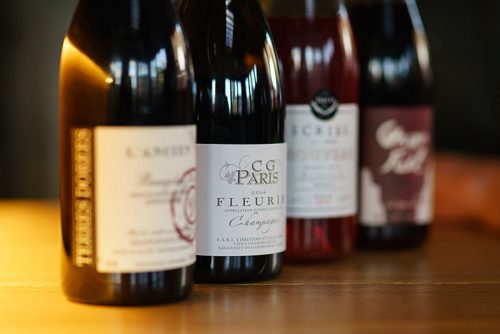
What exactly do you mean when you talk about “responsible” wine?
For me, I use that as a catchall and it has to do with the agriculture and the vinification. To say you’re sustainable is great, but that doesn’t mean anything to me. If you’re organic, even if you’re not certified that means more to me. If you’re biodynamic that’s huge for me personally. If you’re certified that means you’ve also put a lot of money into it. I want to know that the people who are buying and growing the grapes, the guys who are playing with the earth, are not fucking destroying it. And not feeding people chemically adjusted science lab projects.
I want people to be able to taste a piece of earth from a place. Some people are just making the same flavors and not interested in tasting the uniqueness of each site. To me, it’s like the McDonald’s-ification of wine. But I think people in our age group are looking for something that comes from somebody, something unique from a good place and they’re willing to spend a little more money for that.
Your list is very affordably priced, and most of the labels I’ve never heard of before. What kind of wine drinking experience are you hoping to give diners?
I wanted to strip away the mysticism and pretension, the feeling of helplessness in regards to drinking wine. I wanted to bring back the joy and accessibility. I chose not to use complex language. And you can get a glass that’s not expensive.
We’re on Randolph Street, Restaurant Row. We stick out like a sore thumb. To have this vantage point, it’s pretty dope, not just for me but for the [natural wine] movement. If people could be like “Fuck this commodity shit,” that would be so great.
Wine shouldn’t be a status symbol, only for the people who can afford to spend a lot of money. I‘m in my early 30s and I can afford to spend $15-20 dollars and drink a bottle every day. I don’t want wine to be a special occasion; I want you to have the opportunity to dig into this stuff.
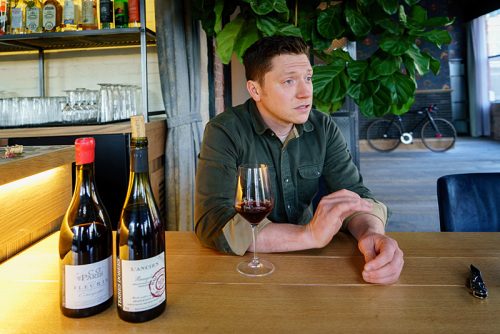
I want a lot of stuff by the bottle to get into a glass price wise. Some people suggested that I need more expensive stuff, because people want to spend lots of money in this area. I don’t need big name Bordeaux or crazy Burgundy though. People haven’t been walking out so it’s been cool.
If you just won an all-expenses paid trip to any wine region, where would you go?
Loire Valley or Croatia. Loire because most of the wine that I love from France comes from Loire. It’s a beautiful place and there’s so much to explore and so many people I want to see. Croatia is selfish because half of it’s beach and I just want to chill out but the wine is also so interesting to me with Plavina and Pošip [grape varietals]. Pošip blows my mind because it’s like pinot blanc but a little bit different.
You were just at New York’s RAW Wine Fair – what was that like and what did you learn there?
So the cool thing about that is I walk into the room and every single wine is made in the style that we want to serve here. And in two full days of tasting, I didn’t have a single wine that was grotesquely flawed or had a huge amount of VA (volatile acidity). I didn’t have to think about it, and ask if it’s made with native yeasts. Nothing was really oaky.
There were people from all over the world – it was cool to taste Georgian wine and see the qvevri, which predates amphora. Every wine tastes like funky traditional cider. You feel like you’re tasting a piece of history.
There was a great Chicago contingent. Jeremy [Quinn] and Josh [Perlman] were there, Matty Colston from Parachute. We got to go out a little bit together and compare notes. The intention is to do a Chicago natural wine fair next year. I think the stars are in alignment. If we have all these satellite places participating in it, we can do a huge natural wine fair and I think Chicago needs that.
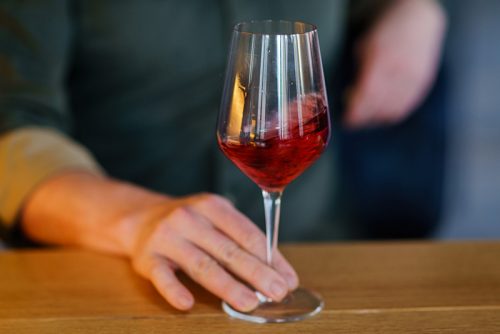
I feel like craft beer, now that it’s reached its height, is everywhere. Everyone knows about it. It’s in the suburbs. But the amount of places that have a good focus on wine, this natural style of wine, that are relaxed and casual with an intention to break down pretension, there’s not that many. You can get it at Giant, BoeufHaus, Rootstock and the more that this group works together and helps each other rise, the better it will be for Chicago. We are an amazing beverage city.
Amber Gibson is a Chicago writer. You can follow her world travels on Instagram @amberyv and Twitter @ambergib.
Latest
Join the Discussion
After you comment, click Post. If you're not already logged in you will be asked to log in or register with Disqus.





